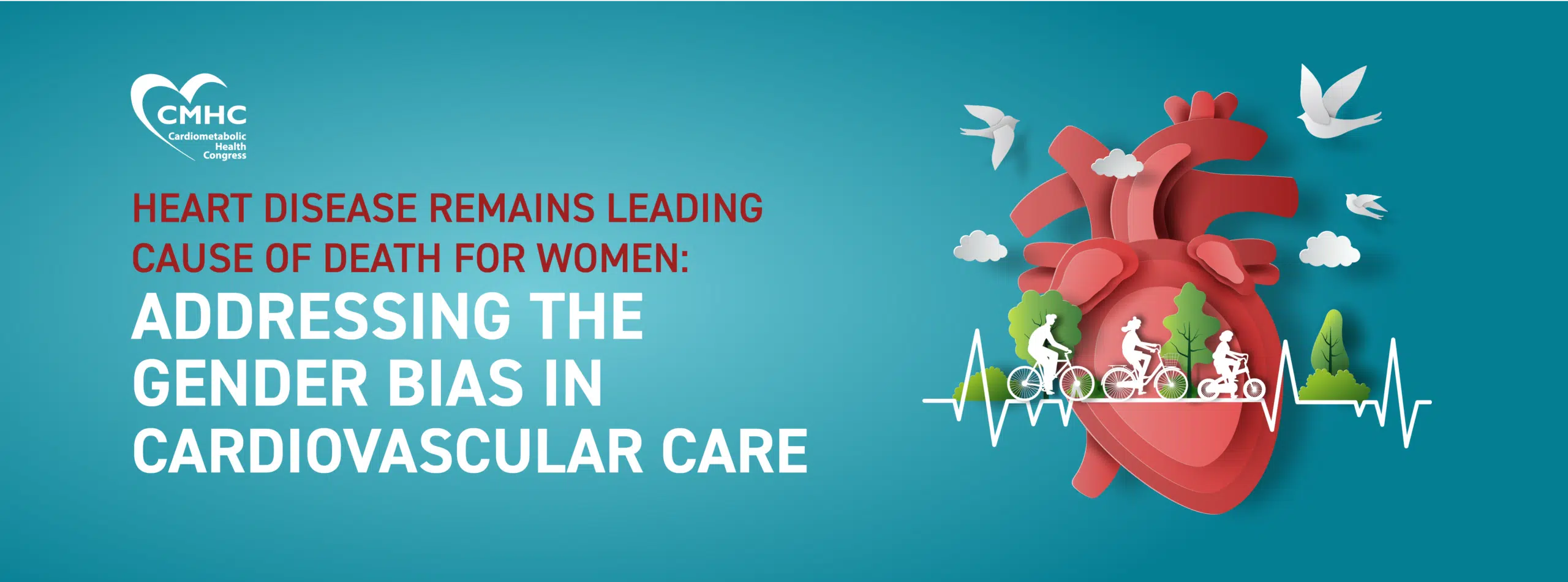This February is American Heart Health Month, and all are encouraged to focus on their cardiovascular health, particularly women. Heart disease is the #1 leading cause of death for women in the US, and cardiovascular disease in women remains understudied, underrecognized, underdiagnosed, and undertreated. This disparity only widens when coupled with factors like race, ethnicity, and other social factors.
Historically, heart disease was believed to be a man’s disease. We can trace the roots of this misconception back to 1948 with the start of the long-term, ongoing Framingham Heart Study, which wrongly attributed age and sex of heart disease risks to only men in their 30s and 40s, cementing heart disease as a man’s disease and putting gender blinders on further research and treatment. As a result, men and women were treated differently; men were prescribed statins and women hormone replacement therapy (HRT).
Since 2000, there has been a dramatic decline in mortality rates for women due to increased public awareness, greater attention to women and cardiovascular disease, and advances in evidence-based treatments. Yet, there is work to be done, and the numbers tell a disheartening story.
Today, over 60 million women (44%) in the US live with some form of heart disease, and heart disease is the leading cause of death for women. With the cardiovascular gender bias discussed since the 90s and more public awareness than ever before, what is behind these striking cardiovascular health disparities in women?
Lack of Diversity in Teams
Women comprise <15% of practicing cardiologists and <5% of interventional cardiologists. This has changed nominally over the last two decades and is unlikely to rise significantly. While there is a greater focus on women’s cardiovascular health, the underwhelming rate of change is connected to the underrepresentation of female doctors in the field of cardiology.
Solution: We need to expand mentorship efforts at medical schools and promote women in this specialty. Systemic issues like gender discrimination and work-life balance must be addressed through root cause analysis and top-down approaches to attract talented females to the specialty. Through the creation and promotion of recruitment initiatives, we can increase the number of women in cardiology and bring cardiology up to speed.
Far Too Few Women in Clinical Trials
Women have been understudied in clinical trials and studies. Policies that exclude women in health and science date back to the women’s health movement in the 1970s when few women worked in science and medicine. In 1977, the FDA prohibited women of childbearing age from Phase I and II drug trials (this is linked to drug incidents like the tragedy of the drug thalidomide.) Protests erupted and eventually led to policy changes, but it wasn’t lawful to include women in trials until 1993, when Congress wrote the NIH inclusion policy into federal law. A year later, in 1994, the FDA opened the Office of Women’s Health to improve the health of women and girls through policy, education, and innovative programs.
Thirty years later, women and minorities remain underrepresented and understudied in clinical trials. Representation has increased in clinical trials, but the knowledge gap persists and must be addressed appropriately.
Solution: To ensure equitable research, clinical trials must be diversified through broad and inclusive guidelines. There are many barriers to women’s representation in clinical trials, and each barrier must be addressed systematically, and stakeholders must be aligned and made accountable. Directing efforts and resources to promote the inclusion and representation of women in clinical trials will increase funding for women’s health and improve health outcomes.
Missed Training Opportunities
Despite its importance and a remarkable rise in programming developed specifically for women’s cardiovascular health, a rapid review and national survey for women’s cardiovascular health in medical education discovered formal education and training is lacking. (This survey included Barbra Streisand Women’s Heart Disease & Health Center Fellowship teaching service, Women’s Cardiovascular Health Curriculum (MUCHACHA), and even our own CMHC’s Foundations of Cardiometabolic Health Certificate Course, among other American, Canadian, and Australian programs).
So, why aren’t these groundbreaking women’s cardiovascular health programs enough?
The short answer is that these powerhouses of women’s cardiovascular health education don’t touch every healthcare provider who cares for and treats female patients.
Solution: While existing medical education training is tremendously impactful for participants and is shedding light on the unmet needs in research, there must be targeted, comprehensive, and coordinated efforts to incorporate women’s health into all provider training. This would close the knowledge gaps for healthcare providers who don’t have access to vital training opportunities. You can forge a path forward for women’s cardiovascular health by participating in relevant training and being a force for change.
This April, be a changemaker and advance your practice with personalized, proactive care tailored to your female patients by joining us for CMHC’s Annual Women’s Cardiometabolic Health and Wellness Masterclass! Over four transformative days, trailblazers like you will come together to deep dive into breakthrough research, master cutting-edge assessment, prevention, diagnosis, and treatment methodologies for women, and connect with fellow pioneers in the field of cardiometabolic medicine. SIGN ME UP!


















